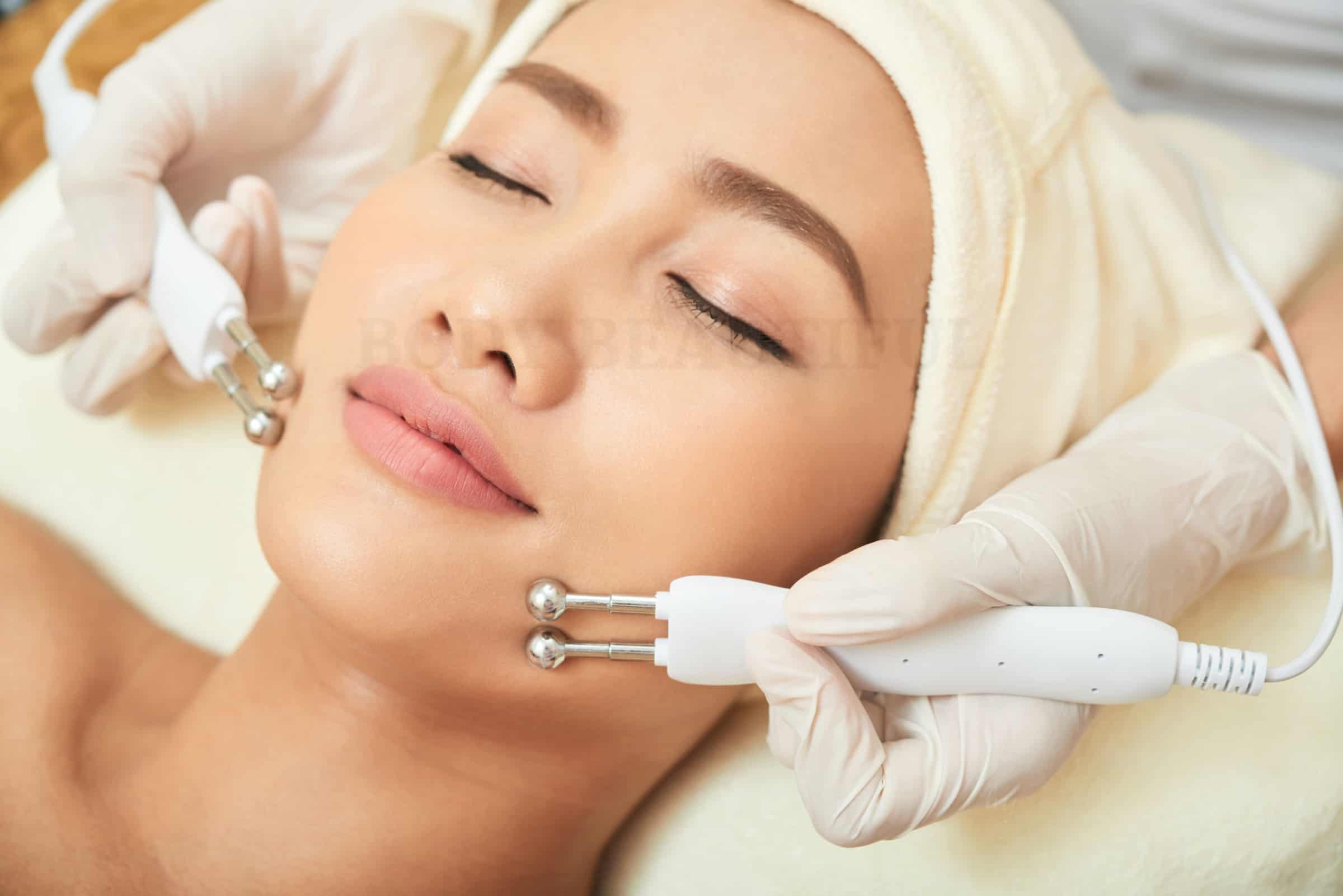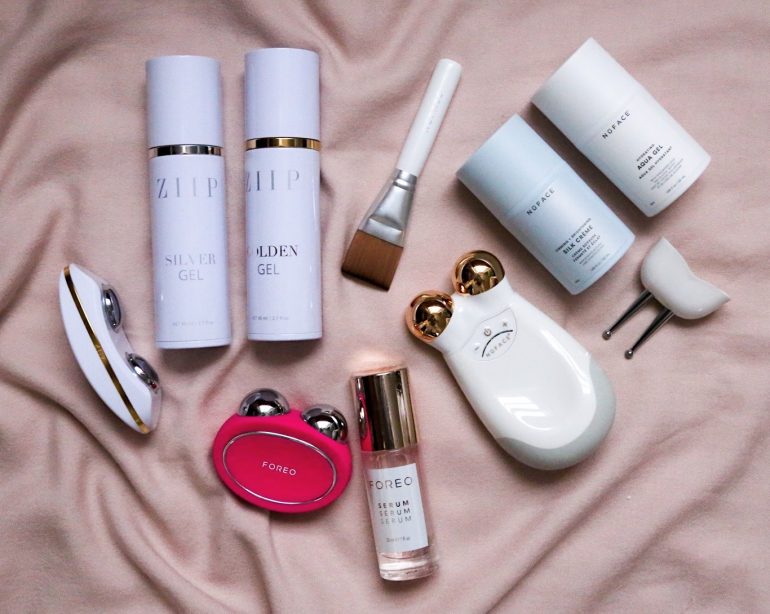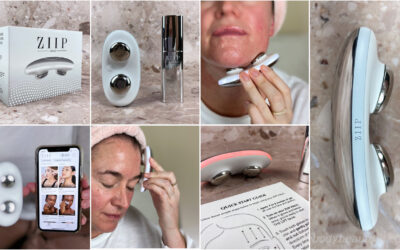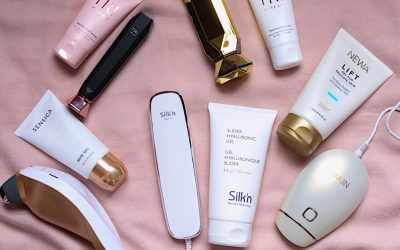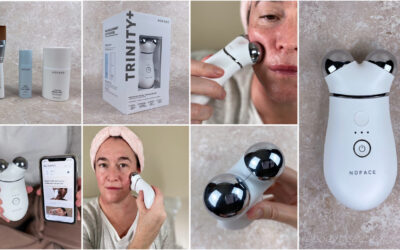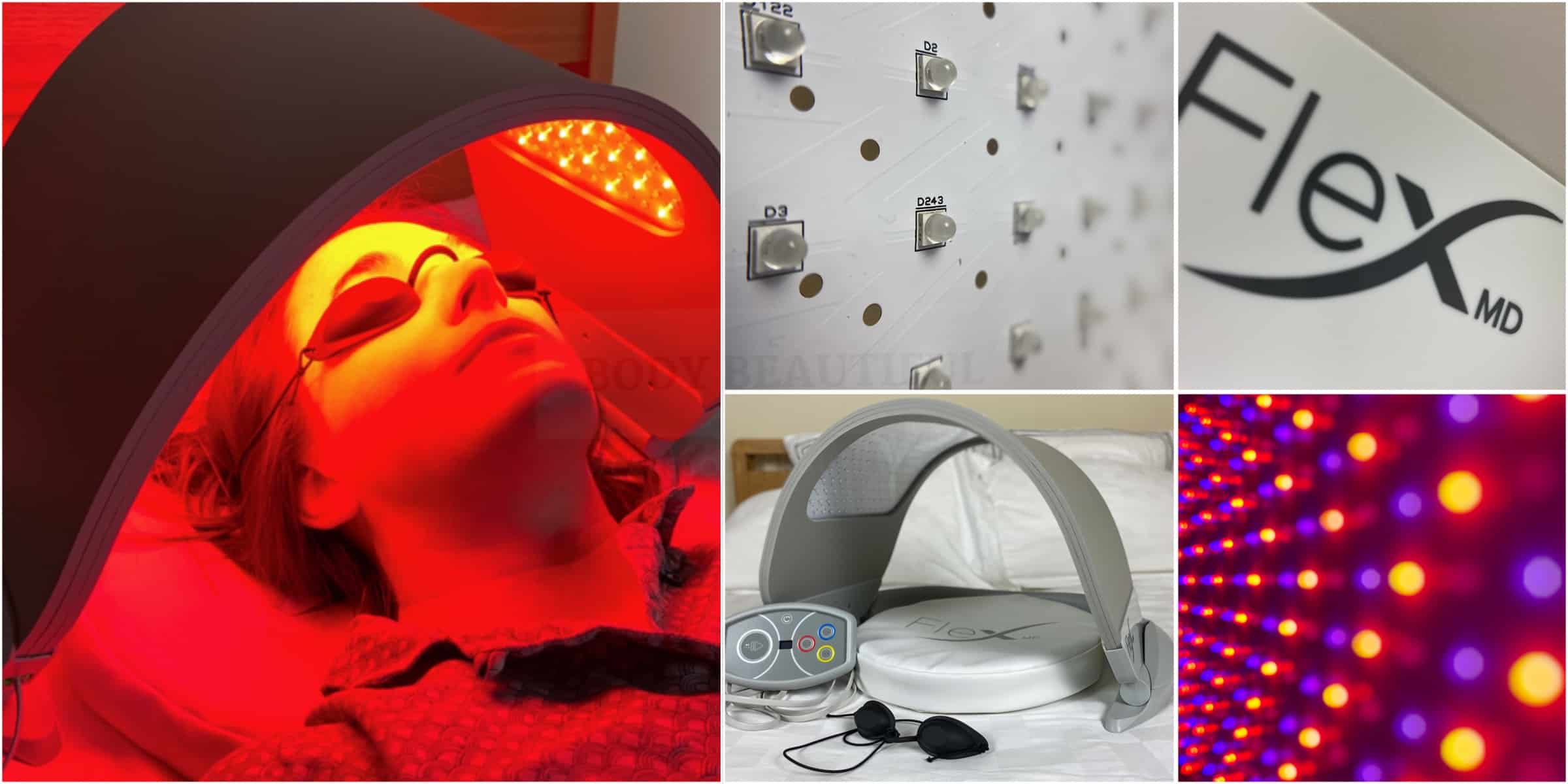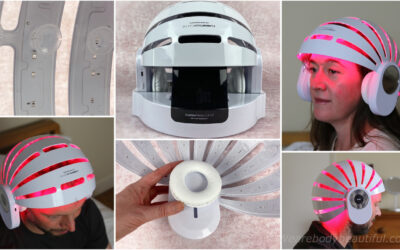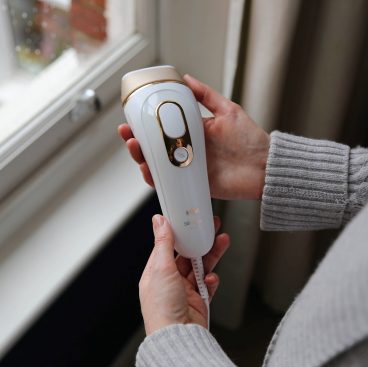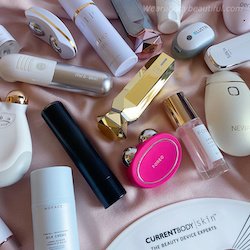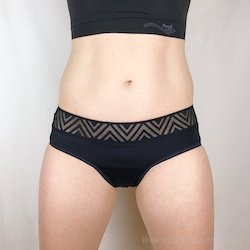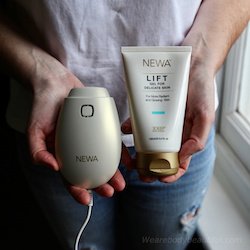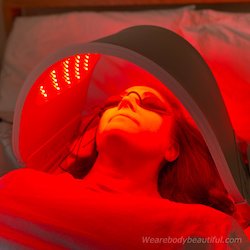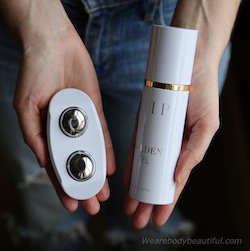K immy K, Kate Hudson, J-Lo, Jennifer Anniston and Meryl Streep. Are super-human genetics behind their fresh, smooth, youthful skin? Course not. It’s a healthy bank balance and those fancy microcurrent facials they’ve each raved about.
But what is a microcurrent facial you ask? ‘Tis where therapists move small electrical probes around your face and neck. This passes a teeny electrical current into your skin. This ‘micro’ current mimics the natural bioelectricity in our cells. It stimulates skin and muscle cells on your face and neck to tone, tighten and lift. The result is a healthier complexion that makes you look younger. And there are several compact, affordable and clinically proven microcurrent devices for use at home too.
If that’s enough for you, check out our recommended best buy home microcurrent devices here. But if you’re hankering for more, read on. I’ve researched high and low to bring you this in-depth microcurrent 101 round-up to help you can decide if a microcurrent home device is right for you.
First, a bit of background…
About Bioelectricity & Electrotherapies
You’re electric, baby.
But then again, so is everyone else.
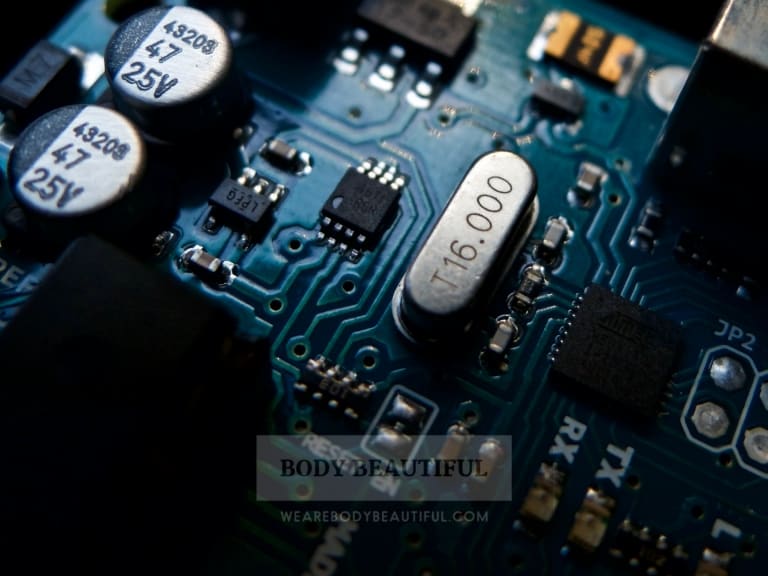
Loads of stuff happens in our bodies because of electrical currents. These currents help fuel our cells, send communications and control the behaviour of cells and tissues. Without them, our hearts wouldn’t beat, nerves wouldn’t fire and send signals to the brain. You couldn’t see, hear, feel or think. All the vital processes in the body, including circulation, breathing, digestion, movement, immune and brain function rely on electricity. Without electricity, there would be no human, animal or even plant life!
Luigi Galvani discovered bioelectricity in 1780 but it wasn’t until the 20th century we started taking advantage of the electrical forces in our bodies using Electrostimulation. Probably the most obvious example is the pacemaker. Over a million new pacemakers are fitted annually, and without these small electrical devices, people worldwide with life-threatening heart conditions couldn’t live healthy lives.
Nowadays, we’ve a variety of different Electrotherapies. One of the most well-known is Electrical Muscle Stimulation (EMS). This targets muscles with low-volt stimulation, causing contractions and rebuilding strength. The home-use Slendertone devices are examples of EMS devices. Another popular type is Transcutaneous Electrical Nerve Stimulation (TENS) which uses a mild current to work on nerves, controlling some types of pain.
INFO: Microcurrent is an electrotherapy and it’s also known as:
👉 Microcurrent Electrical Neuromuscular Stimulation (MENS) and
👉 Microcurrent Therapy (MCT) or
👉 just plain Microcurrent!
Microcurrent is an electrotherapy too.
What is Microcurrent Therapy?
Microcurrent is a type of Electrotherapy commonly used by physiotherapists to speed up tissue healing.
We measure electrical current in units called Amperes or Amps. Microcurrent uses very low-Amp electrical stimulation, in the microamp (μA) range. 1 microamp (μA) is 1 millionth of an Amp. It’s teeny and it works at a cellular level. In comparison, TENS electrotherapy stimulates your nerves to manage pain in the milliamp (mA) range. 1 milliamp (mA) is one-thousandth of an Amp which is 1,000 times greater than microcurrent.

The Arndt-Schultz rule best explains the effect of Microcurrent. It states that
“weak stimuli increase physiological processes and extreme stimuli inhibit or abolishes activity”.
The Arndt-Schultz rule
In other words, your cells readily accept the minuscule electrical charge from Microcurrent, which increases cellular function. Whereas a substantial electrical charge harms the cell and stops it functioning.
TIP: Microcurrent is almost identical to the delicate, low-intensity electrical current already in your own cells. And because it’s so small you can’t feel it.
Research into microcurrent applications began with rehabilitation for sports injuries, wound healings and stroke recovery. There are loads of scientific studies since the 1960s. The majority of these studies agree it’s useful for helping the bones and muscles to heal following injuries, or for skin wounds and ulcers. Studies performed on diabetic patients and people with venous disease found it useful for increasing circulation. It can also help repair muscle function and strength.
How does Microcurrent for healing work?
Microcurrent Therapy uses electric currents like those produced by the body during tissue healing. It encourages specific electrochemical changes ultimately increasing the energy in your cells.
In unhealthy or damaged tissues this current is weak or absent. So, the Microcurrent offers a boost to kickstart the natural healing cycling. To understand better, we must first understand how our cells generate and use electricity.
How our cells use electricity
Bioelectricity is different to the electricity we use every day. That uses a flow of electrons, whereas bioelectrical current is a flow of electrically charged ions. These are the atoms or molecules from our food like sodium, potassium, calcium, and magnesium. Your cells use them to communicate and as a source of electrochemical energy. So, how does it work?
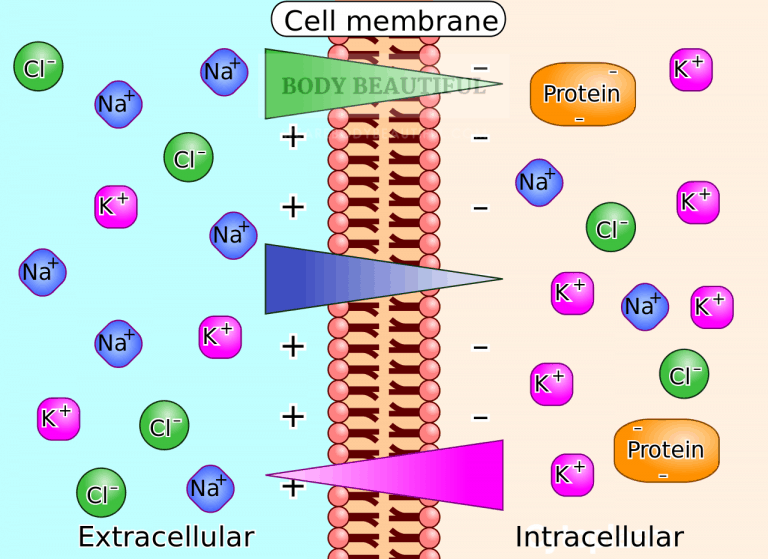
It’s down to how ions do (or don’t) flow through the cell membrane. A cell membrane has protein gateways which allow certain ions to pass through and blocks others. So, the ion concentration in the cell and surrounding cell solutions is different. An imbalance of positive and negative ions across a membrane stores a potential charge, like a battery.
All cells release and use this charge or bioelectric resting potential during metabolic processes. But some use it for special functions such as fast signalling in nerves, muscle movement and secreting hormones or other substances.
So, the flow of charges across the cell membrane generates electrical currents. In turn, different stimuli can trigger different proteins and potentials, currents and patterns to communicate between cells and tissues. For example, this affects how tissues develop and heal.
How Microcurrent helps heal & regenerate
Severely damaged tissues have an imbalanced bioelectrical potential.
This means your natural bioelectricity follows the easiest route around severely damaged areas, rather than the more difficult route through them. Therefore, without these electrical signals, wounds, fractures and breaks can’t naturally heal and regenerate.
But apply microcurrent directly to an injury and it guides damaged cells to ‘jump-start’ their healing processes. The electrically imbalanced cells ‘borrow’ the charge they lack, returning homeostasis to the cells.
Although there are gaps in our understanding about how microcurrent does this, studies show it restores the cell’s ability to move ions across the membrane, and boosts protein, amino acid and ATP production. These are all crucial in wound healing and regeneration.
And these effects of microcurrent on skin and muscle are what also makes it a desirable anti-aging treatment.
Microcurrent anti-ageing facials
Several sources say it was in the 1970s that doctors using Microcurrent Therapy to treat Bell’s palsy noticed a rather interesting side-effect; their patients’ skin tone was improving, and their wrinkles and lines were less pronounced. Interest grew in the beauty industry, and consequently many medical instrument manufacturers switched to marketing cosmetic machines.
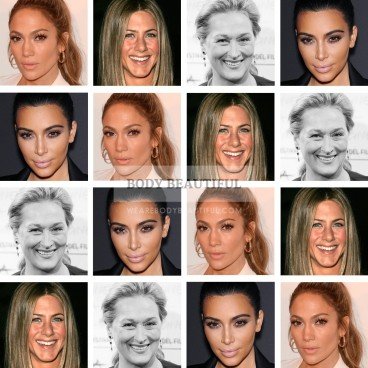
In 1993 the British built CACI microcurrent facial was first available. Since then popularity has slowly grown, boosted in recent years with celebrity fans such as Jennifer Lopez and Jennifer Anniston. It’s now dubbed the ‘non-surgical facelift’.
Microcurrent facials use two hand-held electrode prongs delivering a microamp (μA) dosage of electrical current to your face and neck. It harnesses the same healing power as Microcurrent Therapy, stimulating your cells and increasing production of ATP. And ATP is very important especially in aging skin.
What’s ATP & why is it important?
ATP stands for adenosine triphosphate. Our cellular mitochondria create it, metabolising the food we eat and oxygen we breath. Then it’s stored in the liquid cytoplasm until we need it.
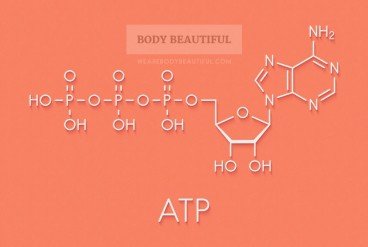
ATP has several purposes in the body. This complicated chemical is a nucleotide which means it’s one of the building blocks for DNA. Without ATP you can’t make new cells to repair and renew tissues.
ATP is crucial because it’s also the energy currency of our cells. With age, we’re less efficient at metabolising ATP. The amount of ATP stored in our skin decreases too. And this is bad because ATP protects us from the effects of ageing and keeps us looking youthful. Boosting our natural levels repairs and rejuvenates aging skin cells, soothes inflammation, helps cells detoxify and promotes amino-acid and protein production. Important proteins such as collagen and elastin, that aid in cellular reparation and act as potent moisturisers. So, with less ATP we have lethargic cells and a tired, dull, older looking appearance.
And this is where microcurrent facials help. The 1982 Dr. Cheng study on rats shows microcurrent at less than 500 μA can boost ATP production by a massive 500%. The study also shows ATP levels drop sharply with microcurrent greater than 500 microamps. Here is a detailed account of how microcurrent creates ATP.
However, we use up ATP very quickly. So, we need several microcurrent facials to restock and build our stores. Professionals recommend a course of 10 to 15 sessions, 2 per week, and then monthly sessions to maintain the levels. This healthy level of ATP stored in our cells is continually available for skin repair and new cell generation, just like in younger skin.
The results & proof for microcurrent facials
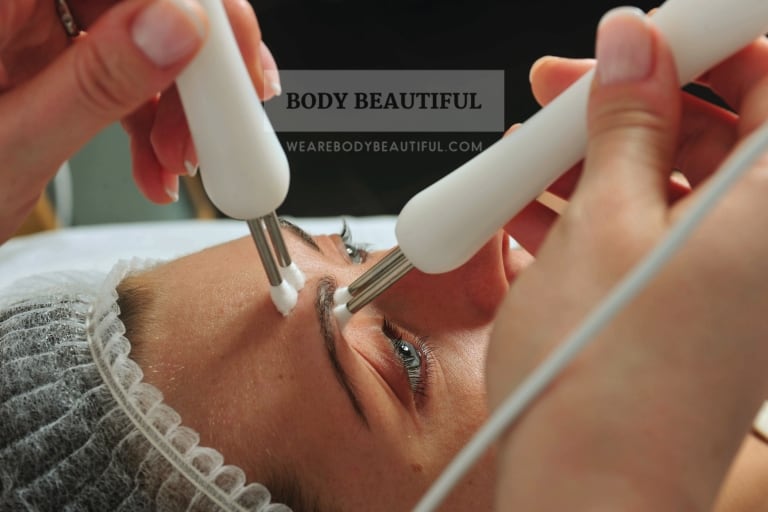
Most practitioners say you can use microcurrent as both a preventative and corrective skin treatment. Some practitioners suggest it’s good from age 25+ when collagen and elastin decline. So, if you have teeny or no visible signs of aging, theoretically you can delay them with the occasional microcurrent sesh.
However, it’s best if you have aging skin and want an anti-aging corrective, visible health boost. Device manufacturers say after a course of around 10 sessions the effects of a microcurrent facial are:
✔️ Boosts the production of ATP
✔️ Stimulates the production of collagen, elastin and amino acids
✔️ Improves circulation
✔️ Helps cells to eliminate waste products
✔️ Restores healthy cell balance
These microcurrent effects give the following visible results:
✔️ Improve skin tone and texture
✔️ Decrease puffiness and inflammation
✔️ Reduce lines and wrinkles
✔️ Tighten and firm skin for enhanced facial contour
✔️ Lift sagging jowls and droopy eyelids
Some researchers found microcurrent dramatically improves acne, whilst others say don’t use it if you suffer this skin condition.
Muscle re-education?
Several providers of microcurrent facials also say it stimulates and ‘re-educates’ the underlying facial muscles to improve tone and reduce sagging.
It’s claimed that by lifting and massaging muscles into specific positions, the increased ATP helps them re-learn lost tone and stay that way for longer. The theory is credited to Dr. George Goodhart, a chiropractor in the 1960s and is possibly from his alternative medicine technique called Applied Kinesiology. However, although microcurrent can lift sagging contours, there’s no clinical evidence to support muscle re-education during a microcurrent facial.
Clinical proof for microcurrent facials
Based on existing studies for Microcurrent Therapy for healing, we can safely say the effects of microcurrent listed above are correct. It boosts ATP, which in turn energises muscles and skin, helps to repair cellular damage, increases protein synthesis and circulation.
One small study, with a sample of 30 women, found it was effective in reducing wrinkles after 30 sessions, and 70% of the participants were happy with the results. CACI, a British company, is perhaps the most famous manufacturer of professional microcurrent facial equipment. Their study shows excellent results after a course of 10 microcurrent facials. But overall, there’s little clinical data confirming the effectiveness of cosmetic microcurrent facials.
So, are microcurrent facials FDA approved?
FDA approval
The US Food and Drug Administration (FDA) protect the nation’s health by making sure medicines and medical devices are safe and effective. Before a professional or home-use microcurrent device is sold or marketed in the US, they must have FDA approval. This means the manufacturer must submit evidence it’s effective, safe and the benefits outweigh the risks.

The FDA has cleared several home-use microcurrent devices such as Nuface and Ziip. They’re in the same category as TENS devices and classified as a class II medical device. The class indicates the risk level associated with using the device. A class I represents low risk such as an elastic bandage, class II is moderate risk, and class III the highest risk such as a pacemaker. Their indicated use is for facial stimulation.
Most professional grade microcurrent devices on the FDA database have clearance for medical applications only. I can’t find any FDA-cleared for professional cosmetic use.
In the UK and Europe, where FDA regulation does not apply, you can get microcurrent treatments at beauty spas and clinics with machinery brands such as CACI, Bio-Therapeutic and A-Lift.
Professional vs at-home microcurrent facials
Like most at-home and professional comparisons, you can expect faster results with professional sessions. But you’ll also pay a lot more overall.
With home-use microcurrent devices the trade-off is they demand a lot of your time and effort to get noticeable results. And the devices have minimal configuration options so they may not be the best match for your exact skin type which can affect your results.
Here’s a comparison table to show the key similarities and differences.
| Professional microcurrent facials | At-home microcurrent facials | |
|---|---|---|
| Who's it for? | For men and women, safe for all skin tones and types. | for men and women, safe for all skin tones and types. |
| What skin types? | Your practitioner advises the number of sessions best for your skin condition and the likely outcome. | Best for mild to moderate sagging skin. |
| Preparation | Cleanse with a water-based cleanser and drink 2 to 4 glasses of water before and after the session. This helps your cells create ATP and flushes away the toxins removed during the treatment. | Cleanse with a water-based cleanser and drink 2 to 4 glasses of water before and after the session. This helps your cells create ATP and flushes away the toxins removed during the treatment. |
| Customisation | Sessions focus on 32 muscles in the face and neck. Your operative configures the machine based on your skin type, health and damage to correct. | Learn & follow fixed routines and/or use specialist attachments for eye and lip areas. Pre-set and not configurable by the user. |
| Schedule | A series of sessions gives cumulative results. You need a course of around 10 to 15 sessions (depending on skin type) at 2 per week, to boost ATP levels and increase cell health. | ATP levels and results slowly build with regular use and get better over time. You need 3 to 5 sessions per week for at least 2 months. |
| Maintenance | A maintenance session every 4 to 8 weeks. | Keep going with the start-up schedule to improve your results or drop to 2 to 3 times per week for maintenance. |
| Sensation | Conductivity gel or mask applied pre-treatment. No pain. Subsensory with just an occasional mild tingling sensation. | Water-based conductivity gel needed. No pain. Subsensory with just an occasional mild tingling sensation. |
| How long is a session? | 45 to 60 minutes per session. Sometimes combined with other treatments such as microdermabrasion. | 5 to 25-minute sessions, plus cleansing & clean-up. |
| Side effects? | Very rare side effects. No irritation, redness or inflammation. You can apply skincare and make-up directly afterwards and return to your day. Learn more below |
Very rare side effects. No irritation, redness or inflammation. You can apply skincare and make-up directly afterwards and return to your day. Learn more below |
| Contraindications | Generally safe but there are some reasons you shouldn't use it. For contraindications see below. | Generally safe but there are some reasons you shouldn't use it. For contraindications see below. |
| Cost | A session cost from £59 to £120/$60 Course of 10 from £531/$580 |
Several devices with price ranging from £160 to £425 |
| Results | Results vary and depend on your skin type, level of damage/sagging and skill of the microcurrent operator. With a skilled operator, the results after a course can be significant. | With a bit of daily effort, you can get confidence boosting results. Results vary depending on skin type and damage and can be subtle to noticeable. A before and after photo helps you track your progress. |
| Pros & cons | [yes_list]
|
[yes_list]
|
Can I have a microcurrent facial?
Microcurrent therapy is safe, but if you have certain conditions you must avoid it. If you opt for microcurrent facials at a clinic, they will check your medical history with you. Here are the common contraidications for professional microcurrent treatments:

Professional contraindications
You aren’t suitable for professional microcurrent facials if any of the following apply to you:
- Taking anticoagulant drugs like Warfarin and Heparin or any drugs in high dosages
- Pregnant in the first trimester
- Wounds or sites of scar tissue that are less than two months old
- Pacemakers
- Implanted heart pumps such as defibrillators or stimulators or hearing aids
- Metallic inserts in the face
Or you have any of the following medical conditions:
- Insulin-dependent diabetes
- History of seizures or epilepsy
- Active cancer
- Severe acne with inflammation
- Any acute infection with fever
- Stroke or heart surgery in the last six months
- Allergies to products used
- Immune deficiency disease
- Thyroid or circulation problems
- Hepatitis
- Chronic fatigue or other hypersensitivity disorders
If you use an at-home device, YOU MUST check the user manual for their list of warnings and contraindications.

Key checks ✔️
Before you buy a home-use device, check:
- You’re not pregnant. It’s not tested for safety during pregnancy
- Don’t have a history of epilepsy or seizures
- Don’t have an electronic implanted device such as a defibrillator, neurostimulator, pacemaker, ECG monitor
- You aren’t under 18 years of age
- And don’t have active cancer

Areas to avoid ❌
Don’t use the device:
- Over swollen, infected or inflamed areas of skin e.g. phlebitis, thrombophlebitis, broken capillaries or varicose veins.
- Take care over any areas where you lack normal sensation.
- Do not use on mid-line of neck, breast or groin area.
- Do not apply stimulation across the chest.

Talk to your doctor
Consult your doctor first if you:
- Have suspected or diagnosed heart disease, epilepsy, or if you haemorrhage following acute trauma or fracture
- Had recent facial surgery or laser treatments
- If you’re unsure of any medical conditions it’s best and safer to check with your doctor for peace of mind
TIP: You can use at-home microcurrent devices after botox or fillers.
👉 Nuface suggest waiting 7-14 days after your procedure
👉 ZIIP suggest waiting 10 days after your procedure
For compatability with other cosmetic procedures, you should first check with your doctor.
Are there any risks or side-effects?
There are just a few very rare side effects from microcurrent facials and no reports of long-lasting or serious reactions to it. Some people have experienced:
- Drowsiness
- Fatigue
- Nausea
These reactions can start an hour after the treatment and last for 24 hours. To help, drink plenty of water (up to two litres) in the two hours following your treatment. If you experience these symptoms for longer than 24 hours, or they are more severe, you should go see your doctor.
Skin irritation or hypersensitivity could occur due to either the electrical stimulation or the gel. If you use a home device, don’t forget to do your skin sensitivity test. And if it’s the device itself try reducing the intensity level and/or seek advice from your doctor.
With other muscle stimulator devices, users have experienced rare skin irritation and burns beneath the electrodes. There are such no reports with microcurrent devices, however, if you were to experience it, stop using it immediately.
At-home microcurrent devices
If you have the dosh and want to splash out, you can try searching locally for a trusted beauty spa. Check the reviews, and ask about the equipment and training before you go ahead.
Or, try this…
The best at-home microcurrent round-up
Learn all the pros & cons of the best at-home microcurrent devices to give you healthy, hydrated, firm, smooth & bright skin.

